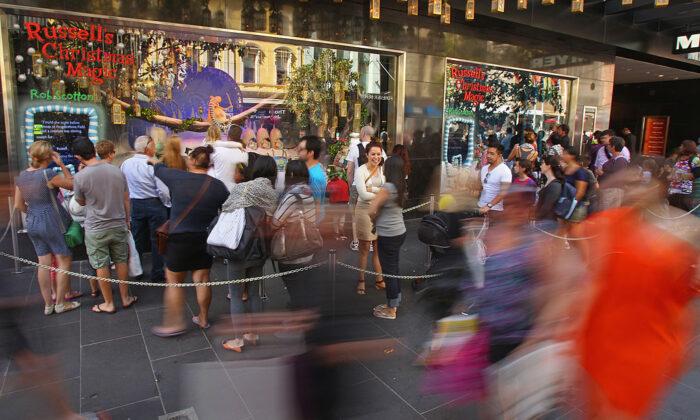Retailers enjoyed an exceptionally strong spend-up a month out from Christmas but there is some uncertainty around how they have fared since in the face of COVID lockdowns in two major capitals.
Consumer confidence—a pointer to future household spending—ended 2020 on a sour note in response to the COVID-19 cluster and lockdown days out from Christmas in NSW’s northern beaches.
Those restrictions were only eased on Jan. 10.
Queensland also declared a snap lockdown in the Greater Brisbane area last weekend—after a case of the highly infectious UK strain was detected—but was able to end it on Monday evening as planned after the state recorded zero locally-acquired cases three days running.
The weekly ANZ-Roy Morgan consumer confidence index will get its first airing of the year on Tuesday.
This gauge dropped two percent last time around in reaction to the NSW lockdown, pulling back from its highest level for 2020 and having rebounded strongly as the economy recovered from the depths of recession.
The monthly Westpac-Melbourne Institute consumer sentiment survey is also released on Wednesday.
In December, this index surged to a 10-year high after recovering 48 percent from a low in April when there was a nationwide lockdown.
The growing strength in confidence coincided with a huge 7.1 percent surge in retail spending in November.
Monday’s retail trade data from the Australian Bureau of Statistics showed November’s increase was led by a whopping 22.4 percent increase in Victorian sales as Melbourne emerged from a lengthy lockdown.
BIS Oxford Economics chief economist Sarah Hunter expects spending patterns will continue to normalise towards their pre-COVID pattern.
“Particularly once the vaccine has been rolled out and the uncertainty over outbreaks prompting further lockdowns diminishes,” she said.





